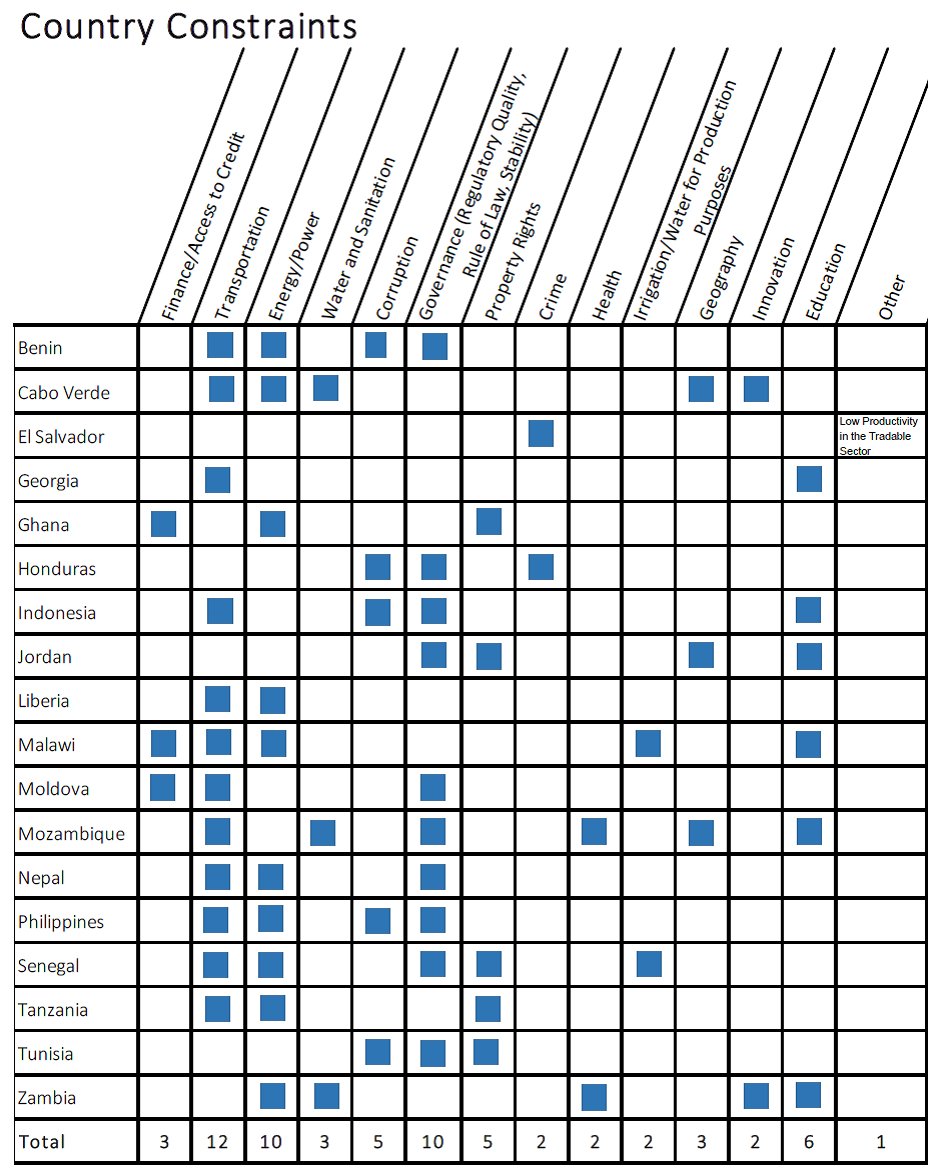
MCC watchers pay a lot of attention to how our Board of Directors selects countries. Performance-based selection is one of our signature features—but it’s just the first step in an exacting process that MCC and partner countries undertake before taxpayer money is ever spent in the country. The process isn’t easy, and money doesn’t always flow at the end of it. But as MCC’s chief economist, I see it as a real strength of the institution.
This is what happens after MCC’s Board selects a country as eligible for assistance—based on a commitment to good governance and investing in sound economic and social policies—but before we fund projects:
1. Undertake a joint search for the most likely binding constraints to private investment and economic growth. I lead our team of MCC economists who, together with our partner country colleagues, undertake a constraints analysis. The results, informed by and tested through broad in-country consultations, enable us to jointly select activities that are most likely to promote sustainable poverty-reducing economic growth. The binding constraint in many MCC countries is in infrastructure, particularly transportation and energy. Governance issues are also common. Education comes up in several cases, notably in countries in the lower middle income category, representing situations in which countries will at best only slowly move further up the income scale and create what people want—jobs—without addressing education quantity and quality. The table below shows MCC’s country-by-country constraints analysis findings to date:

Identify a program to address one or more binding constraints. The partner country, with MCC collaboration and further in-country consultation, undertakes further work to get at root causes behind the binding constraints to growth. The aim is a coherent program logic that explains how policy and institutional reform and investments will help address the constraint. MCC uses cost-benefit analysis to measure the likely impact of proposed projects. It’s a straightforward comparison of costs and benefits; the costs are the MCC-funded grants and related costs funded by the country or other donors, and the benefits are increases in incomes of the country’s targeted households and firms. MCC analyzes proposals as investments, with payoffs going to households and firms. We only include benefits when there is evidence to support the logic and look at who benefits across the income spectrum.
The cost-benefit tool allows a back and forth between country project teams and MCC to improve the cost-effectiveness of projects, notably by looking for cost savings while retaining the benefits. MCC expects projects to pass a “hurdle rate” of at least a 10 percent expected economic rate of return (ERR). As part of project preparations, the country works with MCC to set out the framework for monitoring and evaluation to help keep projects on track during implementation and for careful independent evaluations after completion.
The rigorous combination of the constraints analysis, social and gender analysis, investment opportunity analysis, program logic development, project cost-benefit analysis leading to an ERR, and planning for monitoring and evaluation helps ensure that MCC will support countries doing the right things and doing them the right way.
Selection may be the most well-known way we use evidence in our decisions, but the demanding, data-driven project development process is just as much a part of MCC’s DNA. I hope it will get the attention it deserves and ultimately benefit from receiving your input on how it is working.
Thanks to Sandra Ospina and Natalie Kottke for contributing to this post.

